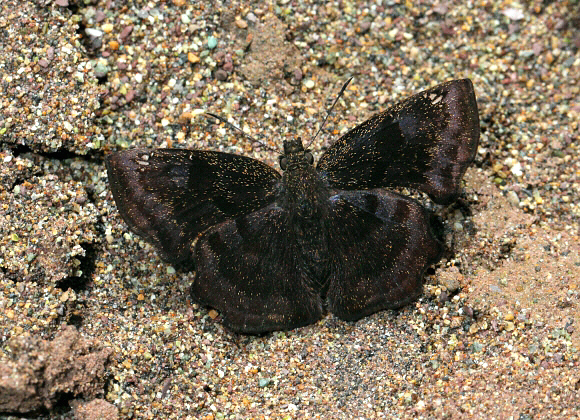
Introduction
The Pyrginae, popularly known as Flats or Spreadwings, are a cosmopolitan subfamily distributed across temperate and tropical habitats throughout the world. In the Americas there are 990 species, of which about 580 are assigned to the tribe Pyrgini.
Skippers in the genus Antigonus are usually known as Spurwings, due to the scallop and projecting spur at the apex of the hindwing. There are 9 species, all restricted to the neotropical region. They typically have dark velvety wings, peppered with grey, brown or cream scales according to species.
Antigonus mutilatus is probably restricted to the upper Amazonian region of Peru, but could possibly also occur in neighbouring parts of Brazil, Ecuador and / or Bolivia.
Habitats
This is an uncommon and localised species, found in primary rainforest and cloudforest habitats at altitudes between about 300-1500m.
Lifecycle
The lifecycle appears to be unrecorded. Generally, Pyrgine butterflies lay their eggs singly on either the upperside or underside of leaves. The larvae are typically dull green or brownish, with thin longitudinal lines along the back and sides, and with black shiny heads. They feed typically on low growing herbaceous plants, but a small percentage feed on the leaves of bushes or trees. The pupae are usually dark and smooth, with the wing cases in a contrasting tone or colour. They are normally formed within silken tents formed by spinning together the leaves of the foodplant.
Adult behaviour
Males are usually seen singly, when imbibing moisture from damp sand or mud. They are often found amongst mixed aggregations of Achlyodes, Anastrus and other Pyrgines.
